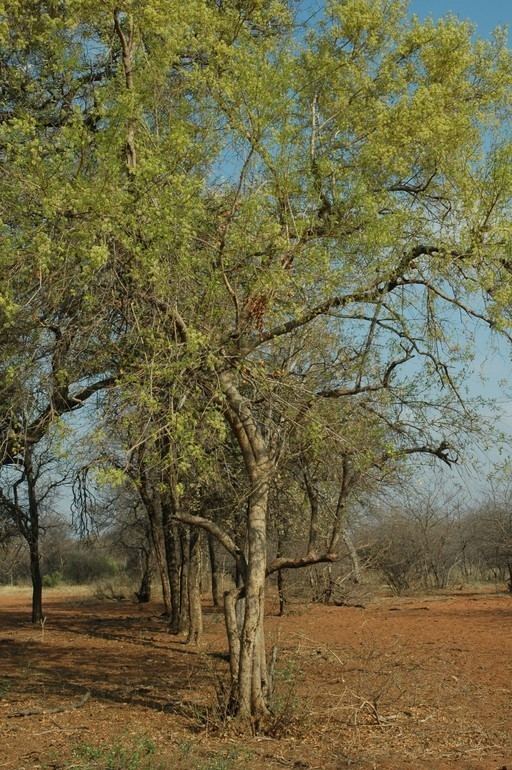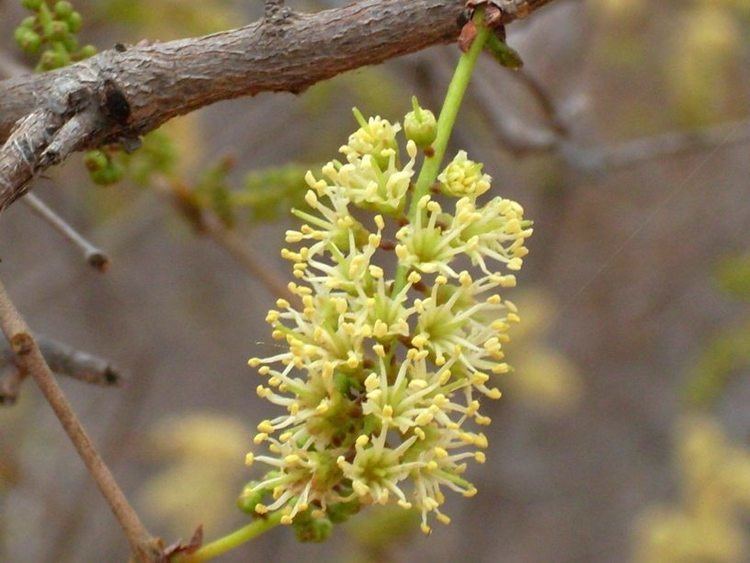Rank Species | ||
 | ||
Similar Senegalia nigrescens, Terminalia sericea, Combretum, Combretum hereroense, Combretum molle | ||
Combretum apiculatum is a species of tree in the family Combretaceae known by the common name red bushwillow. It is native to the mesic to semi-arid savanna regions of Africa, southwards of the equator.
Contents
- Description
- Races
- Range and habitat
- Utilization by game and livestock
- Human use
- Vernacular names
- References

Description
This is a semi-deciduous tree growing up to 10 meters tall, or sometimes a shrub remaining shorter. It has rough gray-black bark with fissures, and the smaller branches may be woolly in texture. The oppositely arranged leaves are up to 11 to 13 centimeters long. They are hairless or hairy. The tip of the leaf tapers abruptly to a twisted point. The foliage turns reddish or golden in the fall. The spike inflorescences emerge between the leaves and are up to 7 centimeters long. They bear yellow or greenish flowers with tiny sepals and petals, and with style and stamens about half a centimeter long. The flowers have a strong scent. The reddish, winged fruit is 2 or 3 centimeters long.
Races
There are two subspecies, the southern ssp. apiculatum, and ssp. leutweinii, which occurs from Namibia to Malawi and northwards, which is differentiated by its hairier leaves.
Range and habitat
It occurs in South Africa, Swaziland, Botswana, Mozambique, Namibia, Zimbabwe, southern Angola, Zambia, Malawi, southeastern DRC, Tanzania and southern Kenya.
This tree occurs in various ecosystems in southern Africa. It is the dominant tree on the savanna in many areas, including regions characterized as lowveld and mopane savanna. It grows alongside other woody vegetation such as common hook thorn (Acacia caffra), sicklebush (Dichrostachys cinerea), large sourplum (Ximenia caffra), livelong (Lannea discolor), white seringa (Kirkia acuminata), and marula (Sclerocarya caffra).
Utilization by game and livestock
Many animals use the tree, especially for food. Kudu, bushbuck, elands, giraffes, and elephants browse the leaves. Eland are so attracted to the tree that they can do damage to it with their feeding. The brown-headed parrot eats the seeds.
Cattle also eat the leaves. The fruits are hazardous to livestock, however, because they are toxic. The foliage can be fed to goats as a supplemental fodder.
Human use
This tree has dense (1.15), fine-grained, strong, dark brown to black heartwood, sometimes used as firewood or for making charcoal. It is hard, and termite-resistant. The tree responds well to coppicing, growing back with plentiful foliage. The bark has been used in leather tanning. Medicinal uses for the species include the treatment of conjunctivitis and stomach ailments. It contains a number of antioxidant compounds, such as cardamonin, pinocembrin, quercetin, and kaempferol. It is an appropriate garden tree, as it is tolerant of frost and drought and provides shade.
Vernacular names
Common names for the tree in other languages include rooiboswilg (Afrikaans), umbondwe (Zulu), imbondvo (Swazi), mohwidiri (Tswana), mohwelere (Sepedi), muvuvha (Tshivenḓa), ndhuva (Tsonga), rukweza (Shona), and omumbuti (Herero).
